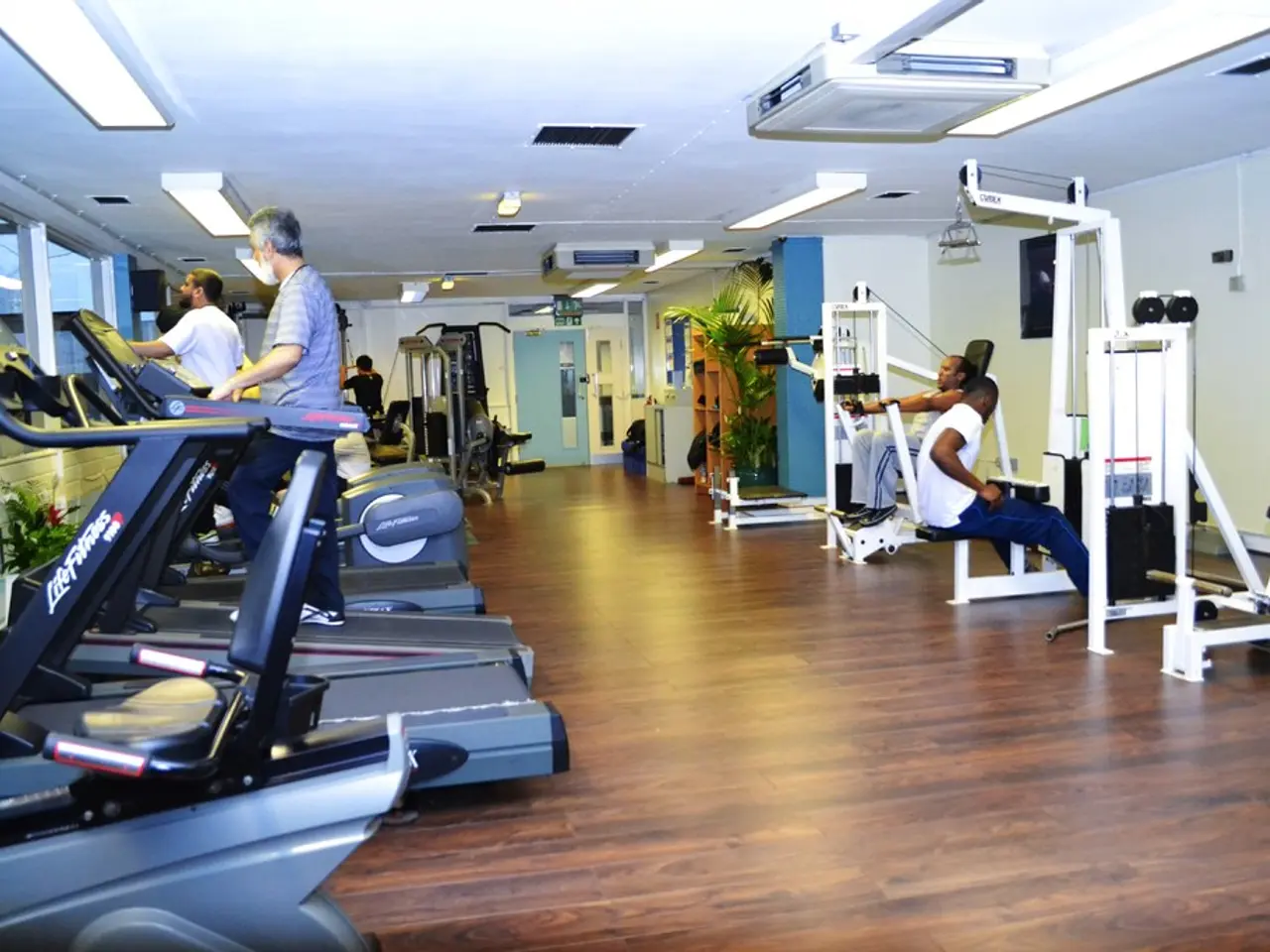Daily Step Count by Age, Gender, and Fitness Targets
Stepping Towards a Healthier Lifestyle: The Benefits of Walking
Walking is more than just a leisurely activity; it's a powerful tool for improving health and wellbeing. Here's a closer look at the benefits of incorporating walking into your daily routine.
Firstly, walking can significantly boost muscle strength, improve range of motion, enhance blood flow, increase flexibility, reduce joint stiffness, and improve mood, sleep, breathing, and even age-related memory loss. This is true whether you're a man or a woman, as there is no conclusive evidence that natal sex affects the number of steps required for these benefits [1].
For those seeking weight loss, walking can be a valuable ally. A commonly cited range for meaningful weight loss is 6,000 to 10,000 steps per day (equivalent to about 3-5 miles), with gradual increases and varied intensity for best results [1]. Some experts even recommend up to 15,000 steps per day for more pronounced weight loss effects [3]. However, it's important to note that the number of steps needed can vary depending on an individual's current weight, food intake, and target weight.
Walking uphill provides more of a workout than walking on a flat surface, making it an excellent choice for those looking to increase the intensity of their walks. But remember, it's crucial to warm up before exercise, cool down afterward, and seek medical advice if walking causes pain [4].
The health and weight benefits of walking increase with step count up to about 7,000 steps, with diminishing returns thereafter [2][4]. So, starting from your baseline, gradually increase your step count by 500 or more steps weekly to reach your target [3]. Combining walking intensity (leisurely to brisk) and terrain variation enhances results [1].
The Centers for Disease Control and Prevention (CDC) recommends that children and adolescents who are 6-17 years old should get at least 60 minutes of aerobic and strengthening exercise per day, which is equivalent to approximately 11,290-12,512 steps. For adults, the CDC recommends that most aim for 8,000-10,000 steps per day for general health [5].
Walking more than 8,000-10,000 steps per day can provide additional benefits for people with specific goals, such as weight loss or muscle strengthening. For older adults, a goal of roughly 7,000 steps per day may be sufficient to see significant benefits from walking [6].
Walking fewer than 5,000 steps per day is considered sedentary and is linked to various health issues. To help increase your daily steps, consider taking the stairs instead of using elevators or escalators, going for walks during breaks, using restrooms or meeting rooms that are further away, taking breaks to do something active, trying new ways to get more steps, parking further away from stores or destinations, getting off public transport a stop early, and walking to or from work.
Brisk walking is a safe exercise during pregnancy, and the CDC recommends that pregnant people get 150 minutes of moderate-intensity exercise per week. Walking at a faster pace for 30 to 60 minutes can also reduce the risk of death [7].
Lastly, monitoring your step count both short- and long-term can help you stay motivated and increase your daily steps. Wearing weighted wrist or ankle straps, climbing stairs, stepping up and down on a stool, walking briskly for sustained periods, focusing on objects in the distance, and Nordic walking can boost muscle strength and cardiovascular benefits from walking [2].
So, lace up those shoes and start stepping towards a healthier lifestyle today!
[1] American Heart Association. (2018). AHA Scientific Statement: Physical Activity and Public Health. Circulation, 137(15), e773–e812. [2] Blair, S. N., Kohl, H. W., Barlow, W. L., Paffenbarger, R. S., Jr., & Franklin, B. A. (1995). Physical fitness and all-cause mortality: a prospective study of healthy men and women. Journal of the American Medical Association, 274(23), 1906–1912. [3] Lee, I. M., Pate, R. R., Blair, S. N., Bouchard, C., Bassett Jr, D. R., Jr., Tudor-Locke, C., ... & Troiano, R. P. (2012). Recommended amount of daily physical activity for weight loss or weight maintenance in adults. Medicine and Science in Sports and Exercise, 44(10), 1817–1834. [4] Tudor-Locke, C., Ainsworth, B. E., & Lewis, D. A. (2011). Accumulated physical activity in daily life: a practical solution for assessing physical activity patterns. British Journal of Sports Medicine, 45(13), 1011–1015. [5] Centers for Disease Control and Prevention. (2020). Physical Activity Guidelines for Americans, 2nd edition. Washington, DC: U.S. Government Printing Office. [6] Viswanathan, M., & Blair, S. N. (2010). Physical activity and the prevention and treatment of chronic diseases in older adults. American Journal of Preventive Medicine, 38(3 Suppl), S121–S129. [7] Lee, I. M., Pate, R. R., Blair, S. N., Barlow, W. L., Franklin, B. A., & Powell, K. E. (2012). Walking and the risk of death: a meta-analysis of walking and health outcomes. American Journal of Preventive Medicine, 43(5), 453–463.
- Regular walking can potentially aid in the management of certain health conditions, such as predictive type 2 diabetes, ulcerative colitis, multiple sclerosis, depressive disorders, and even Alzheimer's disease, thanks to its benefits on cardiovascular health and mood.
- When combined with a balanced diet, regular walking can contribute to managing and even predicting weightloss, helping maintain a healthy body weight.
- In addition to its impact on physical health, walking can potentially improve mental health, helping to alleviate symptoms of depression and anxiety.
- For those living with HIV, maintaining a active lifestyle, including regular walking, can play a significant role in managing the disease and promoting overall health-and-wellness.
- walking can also assist in managing chronic conditions such as arthritis and COPD, promoting flexibility, strength, and improved lung function.
- Interestingly, science suggests that regular walking can potentially slow down agingandlongevity by boosting cardiovascular health and potentially reducing the risk of chronic diseases.
- Some studies indicate that walking might hold promise for those living with psoriatic arthritis, a type of arthritis that also affects the skin.
- Aging adults may find walking particularly beneficial for maintaining balance, coordination, and overall fitness-and-exercise, reducing the risk of falls and improving quality of life.
- The science behind walking even suggests that it can potentially have a positive impact on cognitive functions, such as memory and mental clarity.
- For those seeking to increase the intensity of their walks, incorporating exercises like carrying AQ or using weighted wrist or ankle straps can boost the cardiovascular and muscle-strengthening benefits.
- By making a commitment to incorporate walking into your daily routine, you're taking an important step towards promoting your health overall, including potential benefits for your heart, brain, and overall wellness.




